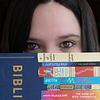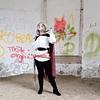Take a photo of a barcode or cover
170 reviews for:
Queer Heroes of Myth and Legend: A Celebration of Gay Gods, Sapphic Saints, and Queerness Through the Ages
Dan Jones
170 reviews for:
Queer Heroes of Myth and Legend: A Celebration of Gay Gods, Sapphic Saints, and Queerness Through the Ages
Dan Jones
funny
hopeful
informative
lighthearted
reflective
relaxing
fast-paced
the author referred to Sappho as “the lesbian Lin-Manuel Miranda” and I simply could not read anymore.
funny
informative
inspiring
funny
informative
fast-paced
informative
slow-paced
informative
relaxing
fast-paced
informative
lighthearted
fast-paced
funny
informative
lighthearted
challenging
funny
informative
inspiring
lighthearted
reflective
fast-paced
I found this book to be incredibly enlightening and interesting. Often today, we forget the extensive amount of LGBTQ+ ness that can be found in the history of our own countries, cultures and religions. We ignore the LGBT icons prevalent in our own cultures, just because they existed BEFORE our time, and we want to deny this history.
I'm talking about how evident and apparent (and maybe even accepted) it was for cultural icons to be queer historically; from a God giving birth (Loki), and a God having a male lover (Zeus), to the absolute gender fluidity of Viola in twelfth night, used to create comedy as the audience know her true identity when those around her do not in Elizabethan England. If these Gods and stage characters were culturally created and accepted during these periods, how can we deny the possible existence of queerness in these societies at that time.
Most of his examples are ALL backed up with evidence from original texts, but they have just have been selectively ignored in favour of other tales, which were pushed to the front of the cultural mind overtime. Modern society wishes to wilfully neglect the history of the LGBTQ community in other cultures and eras, but the examples he uses shows that this is indisputable. He also pulls out modern examples of LGBT cultural icons that have taken the media over. This includes Frodo and Sam (who in Tolkein's book definitely act as a couple, even more so than in the movies), and Willow from Buggy the Vampire slayer who had a shocking (at that time) character arc, and who has strong cultural significance.
The only thing I would say is that I think that the writer takes his queer readings, and examination of in between the lines analysis, too far sometimes. He sometimes argues that some cultural icons are queer AF when they are in fact... definitely not... and I say that as someone who is part if the LGBT community, and who also did a degree that covered how to apply queer reading methods to literature. He projects his own readings, desire for representation, and wishes (and sometimes even queer fandom hype), onto some cultural icons, when in reality there is very little evidence to support that they are queer at all. We have just projected our own readings onto this.
The writing is fun and simple to read, and not too academic, and clearly made to explain LGBT history and cultural icons to the everyday reader.
I'm talking about how evident and apparent (and maybe even accepted) it was for cultural icons to be queer historically; from a God giving birth (Loki), and a God having a male lover (Zeus), to the absolute gender fluidity of Viola in twelfth night, used to create comedy as the audience know her true identity when those around her do not in Elizabethan England. If these Gods and stage characters were culturally created and accepted during these periods, how can we deny the possible existence of queerness in these societies at that time.
Most of his examples are ALL backed up with evidence from original texts, but they have just have been selectively ignored in favour of other tales, which were pushed to the front of the cultural mind overtime. Modern society wishes to wilfully neglect the history of the LGBTQ community in other cultures and eras, but the examples he uses shows that this is indisputable. He also pulls out modern examples of LGBT cultural icons that have taken the media over. This includes Frodo and Sam (who in Tolkein's book definitely act as a couple, even more so than in the movies), and Willow from Buggy the Vampire slayer who had a shocking (at that time) character arc, and who has strong cultural significance.
The only thing I would say is that I think that the writer takes his queer readings, and examination of in between the lines analysis, too far sometimes. He sometimes argues that some cultural icons are queer AF when they are in fact... definitely not... and I say that as someone who is part if the LGBT community, and who also did a degree that covered how to apply queer reading methods to literature. He projects his own readings, desire for representation, and wishes (and sometimes even queer fandom hype), onto some cultural icons, when in reality there is very little evidence to support that they are queer at all. We have just projected our own readings onto this.
The writing is fun and simple to read, and not too academic, and clearly made to explain LGBT history and cultural icons to the everyday reader.
adventurous
emotional
funny
informative
inspiring
lighthearted
reflective
sad
fast-paced
3.75* - a lighthearted and fun look at, as the title says, queer heroes of myth and legend (and modern popular culture). A few chapters feel a little bit tenuous (Robin Hood) but I overall enjoyed the read, learnt a few new things and was sadly reminded about the outrageous decision to -
Spoiler Alert -
kill off Tara in Buffy the Vampire Slayer.
Spoiler Alert -
kill off Tara in Buffy the Vampire Slayer.








